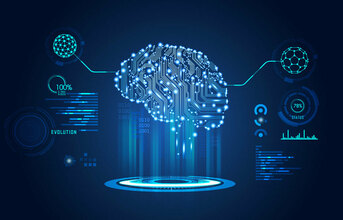
The utilities' space is rapidly transforming today. It's shifting from a conventional and highly regulated environment to a tech-driven market at a fast clip. Collating data and optimising manpower are a constant struggle. The smarter optimisation of infrastructure has increased monumentally with the outbreak of the pandemic, and also the dependency on technology. There is an urgent need to balance the supply and demand for which artificial intelligence (AI) and machine learning (ML) can come into play.
Data Science, aided by AI and ML, has been leading to several positive developments in the utility space. Digitalisation can increase the profitability of utilities by significant percentages by utilising smart meters for grids, digital productivity tools and automating back-office processes. According to a study, firms can increase their profitability from 20 per cent to 30 per cent. Digital measures rewire organisations to do better through a fundamental reboot of how work gets done.
Customer Service & AI
According to a Gartner report, most AI investments by utilities most often go into custom-er service solutions. Nearly 86 per cent of the utilities studied used AI in their digital marketing, towards call centre support and customer application. This is testimony to the investments in AI and ML that can deliver a high ROI by improving speed and efficiency, thus enhancing customer experience. The AI that's customer-facing is a low-risk investment as customer enquiries are often repetitive, such as billing enquiries, payments, new connections etc. AI can deliver tangible results for businesses on the customer service front.
Automatic Meters For Energy Conservation
As the manual entry and billing systems are not only time-consuming but also susceptible to errors and ex-pensive too, the Automatic Meter Reading (AMR) System has made a breakthrough. The AMR enables large infrastructure setups to collect data easily and also ana-lyse the cost centres and the opportunities for improving the efficiencies of natural gas, electric, water sectors and more. It offers real-time billing information for budgeting. It has the advantage of being precise compared to manual entry. Additionally, it is able to store data at distribution points within the networks of the utility. This can be easily accessed over a network using devices like mobile and handhelds. Energy consumption can be tracked to aid conservation and end energy theft.
Predictive Analytics Enable Smart Grid Options
By leveraging new-age technologies, utilities can bene-fit immensely. These technologies in the energy sector help in building smart power grids. The energy sector heavily relies on a complex infrastructure that can face multiple issues as a result of maintenance issues, weather conditions, failure of the system or equipment, demand surges and misallocation of resources. Overloading and congestion lead to a lot of energy being wasted. The grids produce humongous data which help with risk mitigation when properly utilised. With the large volume of data that continuously passes over the grid, it can be challenging to collect and aggregate it. The operators could miss these insights which could lead to mal-function or outages. With the help of ML algorithms, insights can be obtained for the smooth functioning of the grids. Automated data management can help main-tain the data accurately. With the help of predictive analytics, the operators can predict grid failures before the customers are affected and also create greater customer satisfaction and mitigate any financial loss.
Efficient And Sustainable Energy Consumption
These allow for better allocation of energy for consumption as it would be based on demand and can save re-sources and help in load management and forecasting. AI can also deal with issues pertaining to vegetation by analysing operational data or statistics. This can help to proactively deal with wildfires. Thus, it can become a sustainable and efficient system. To overcome issues pertaining to weather-related maintenance, automation helps receive signals and prioritise the areas that need attention to save money and cut down downtime. To achieve this, the sector adopts ML capabilities as they need to be able to access automation fast and easily.
The construction sector is also a major beneficiary of the solutions. Building codes and architecture are often humongous challenges that take a long time to meet. But some solutions help the builders and developers test these applications seamlessly without any system interruptions. By integrating AI and ML in the data management platforms, the developers enable the data-science teams to spend enough time innovating and much less time on maintenance. With the rise in computational power and accessibility to the Cloud, deep learning algorithms are able to train faster while their cost is optimised. AI and ML are able to impact different aspects of a business. AI can enhance the quality of human jobs by facilitating remote working. They can help in data collection and analysis and also provide actionable inputs. Data analytics platforms can throw light on the areas of inefficiency and help the providers keep costs down.
Though digital transformation might appear intimidating, its opportunities are much more than the cost and risk associated. Gradually, all utilities will undergo a digital transformation as it has begun to take root in the industrial sectors. This AI-led transformation will improve productivity and revenue gains, make networks more reliable and safer, accelerate customer acquisition, and facilitate entry into new areas of business. Globally, the digital utility market is growing at a CAGR of 11.7 per cent for the period 2019 to 2027. In 2018, the revenue generated globally for the digital utility market was 141.41 Bn and is expected to reach $381.38 billion by 2027 according to a study by ResearchAndMarkets.com. As the sector evolves, the advantages of AI and ML will come into play and lead to smarter grids, efficient operations and higher customer satisfaction. The companies that are in a position to take advantage of this opportunity will be ready for the future challenges that could emerge in the market.



























